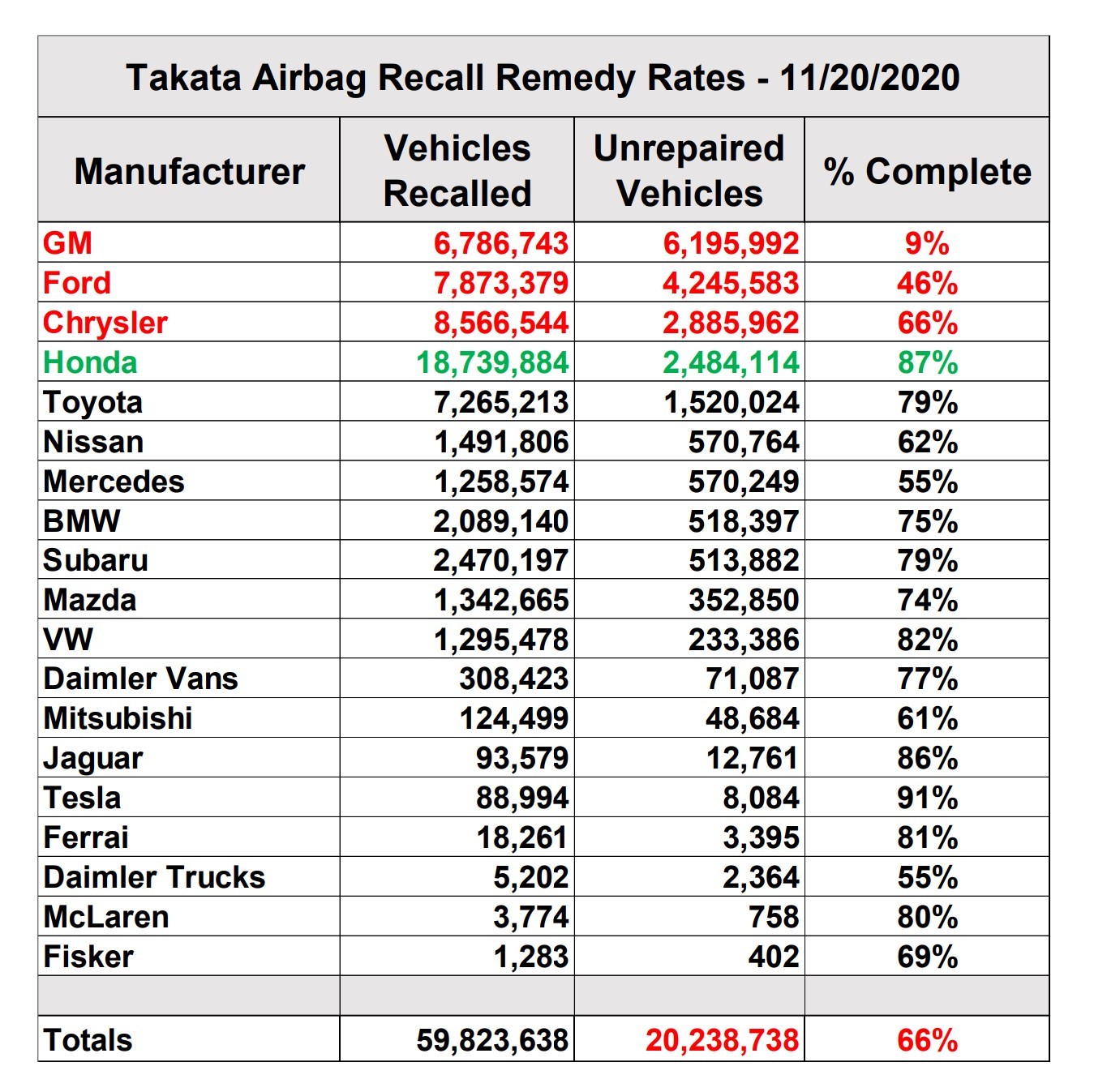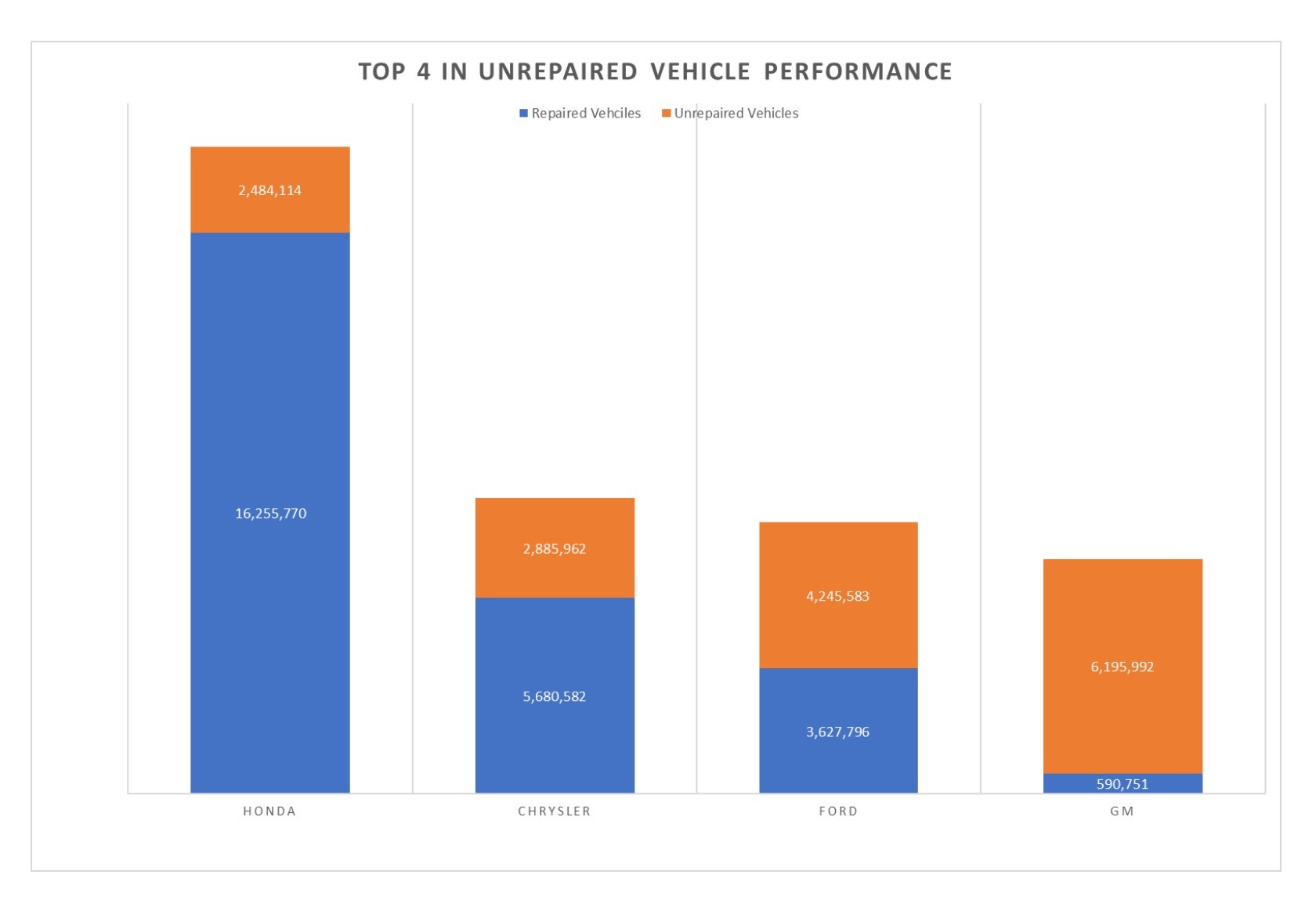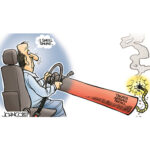The Takata Airbag Recall – Automotive’s Dirty Little Secret
by Kevin Fitzgerald on April 20, 2021
You may hear people say, “That’s not real, it’s only Hollywood”, and in the case of the recall formula described in the movie Fight Club, you would hope that to be the case. But this scene from the picture, crystalizing a culture where ethics takes a back seat to profit, is closer to truth than imaginable. Warning: This video contains graphic content. Viewer discretion is advised.
It may seem shocking to some that automakers put a price tag on human life, and others may find it hard to accept as truth, but the industry’s’ collective response to the Takata airbag recall all but confirms its reality. The recall numbers don’t lie. They are ugly and paint a picture of a callous industry, but first some background.
Takata airbags can kill. Launched in the summer of 2000, they are found in nearly every make of car and truck across the world. At their heart is an efficient, ammonium nitrate (PSAN) inflator that offered Takata’s customers the smallest and lightest airbags on the market. Smarter companies passed on PSAN, wary of its accelerated aging in the presence of heat and moisture. But Takata couldn’t resist, and in 2009, Ashley Parham became their first victim, killed in a minor accident she should have walked away from. The propellant in her airbag’s inflator had withered over time causing the inflator’s internal pressure to soar, rupturing its steel case, and spewing a piece of shrapnel that severed her carotid artery. Twenty-seven deaths have followed, along with more than four hundred gruesome injuries.
THE NUMBERS
A staggering 100+ million Takata airbags have been recalled globally since 2008 with the vast majority between 2015 and 2017. Sixty million of those are in the U.S. and according to the National Highway Traffic Safety Administration (NHTSA), 20 million are still on our roads and in the face of your friends and family. It is simply mindboggling. All but a few were supposed to be fixed by now!
The fiasco has ensnarled nineteen automakers and their remedy completion rates are listed below in descending order of unrepaired vehicles. This analysis will focus on the behavior of the top four, General Motors, Ford, Chrysler, and Honda, but don’t be fooled by Honda’s ranking. They represent a ray of light in a very dark field. They are not clean in this tragedy but are now displaying a strong ethical culture. Note: Includes Ford’s three million PSDI-5 inflators covered in their petition of inconsequentiality to NHTSA which was rejected on 1/20/2021.

GENERAL MOTORS
GM had a total of 6.8 million vehicles to repair. Nowhere near the least, but nowhere near the most. That spot was Honda’s with a whopping 18.8 million vehicles. GM was well shy of that, in a manageable position, and if they had followed Honda’s lead, would already have this mess in their rear-view mirror. Instead, they choose a vastly different path, agreeing to remedy only 800K and petitioning NHTSA to exclude the balance, six million passenger airbags in their most popular pickups and SUVs! Why? Because GM claimed their Takata inflators were unique – stronger than the rest, with a better propellant geometry. When that didn’t pass the laugh test, it was the cooler temperatures in their cavernous pickup trucks that halted the aging process. It took NHTSA five years to come to their senses and order GM to replace the airbags. The whole charade just made the vehicles that much harder to find and the airbags that much more dangerous. Shameful.
Sadly, there’s more. In November 2019, GM belatedly announced the recall of 170K Sonic, Cruze and Trackers in Brazil with Takata SDI driver inflators. By that time, Honda Brazil had already reported 28 ruptures of the inflator with 11 injuries. It was already under recall by various automakers globally, killing seven in Malaysia and two in U.S., all this making it difficult to explain GM’s foot dragging. And not surprisingly, two months after the announcement, an SDI exploded in a GM Celta in Aracaju, killing the driver. Press reports didn’t surface until July 2020, where it was revealed that GM had alarmingly not included the Celta in their earlier action. Pressed by Brazilian authorities as to the omission, GM promptly added 234K Celtas and Classics to the list. This whole episode is unconscionable.
FORD
Ford followed GM right down the same greedy path, petitioning NHTSA to exclude 3 million of their 8 million total, all PSDI-5 driver airbags. Takata struggled constantly with this inflator, lying to customer after customer about its proclivity to explode following environmental exposure. Ford knew this. They were in Takata in 2004, examining what was left of one of their validation inflators. Additionally, I handed NHTSA the data to bury PSDI-5 in early 2015, but just like GM’s petition, the charade went on for five years before replacements were mandated. And all for what?
CHRYSLER
Query folks at Chrysler about their poor performance and they will tell you, “We send constant letters and e-mails, post on social media, but we can’t make people bring their cars in.” That’s true, but it’s not an independent streak or laziness keeping owners away. Many just don’t understand the danger their vehicle may present, as evidenced by this interview from a 2018 Wall Street Journal article, Carmakers Try to Cajole Consumers Into Caring About Air-Bag Recall
David Benevides, a 41-year-old small-engine mechanic in Hawaii, was surprised in September to learn from his son that a Honda Motor Co. representative had visited his home with a warning: The air bag in his car might explode. Mr. Benevides lives 25 miles from the nearest town, Hilo. He had received recall notices for his 2002 Civic and seen news stories about rupturing air bags but said he “didn’t take it seriously” before Honda showed up at his doorstep.
Chrysler’s campaign is stagnant. The recall is an incredible costly drag to them, not a lifesaving endeavor. Of the 2.8 million vehicles they have left to repair, 82% should have already been fixed. Whatever they are doing is not working. A company with an ethical cultural would recognize this, take responsibility, and deploy new strategies. It can be done. Just ask Honda.
HONDA
Honda was not always the darling of the recall. They were fined heavily at its onset for withholding information and violating reporting guidelines. Like I said earlier, they were not clean, but did they ever learn a lesson. Out of almost 19 million vehicles recalled, they have repaired an astonishing 16 million, far more than GM, Ford and Chrysler combined. You can’t change the past, but you can acknowledge and appreciate a company that set out to right a wrong and is doing just that.

WRAP UP
With over 20 million Takata airbags still on U.S. roads alone, some as old as 20 years, more preventable deaths are inevitable. It’s a sad reality that will play out for years to come, witnessed by the four lives we lost in 2020. But automakers know this a back burner issue and play down the few deaths a year. The media picks it up for a couple of days, and then it fades quickly. Injuries are settled behind closed doors, hidden from public view. Unless we act, letters will just continue to be sent to people that don’t even own the vehicles any longer and it will be put back on us. Enough. Take the completion rate table with you the next time you go car shopping and if your automaker is not acting in good faith, press them as to why and let them know it may influence your decision. Hit them where it hurts, and watch their culture change quickly.


Comments ( 0 )